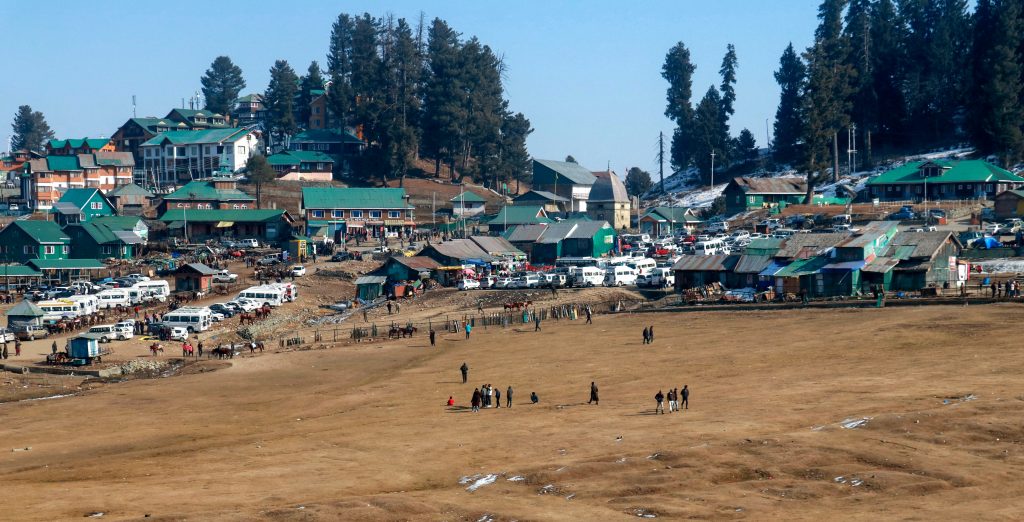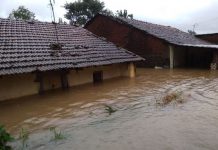Everybody is looking hopefully for some snow in February. If it happens, it will not only bring more tourists but will also help replenish the retreating glaciers, which otherwise may lead to diminished river flows, impacting in turn the farming and power generation. A report by Riyaz Wani

Kashmir is experiencing an unexpected snowless winter with bright blue skies and sun-soaked days. While the warmth may be welcome, beneath the surface, a quiet concern brews, as the absence of snowfall threatens to cast a long shadow over the upcoming summer. It raises alarm for the local economy, as depleted glaciers may lead to diminished river flows, impacting in turn, farming activities and power generation.
For the past month, daytime temperatures have consistently exceeded the normal levels by approximately 6 degrees Celsius, as reported by Indian meteorological authorities. Typically, during this severe winter period, daytime temperatures are around 5 degrees Celsius.
In December, the Valley witnessed about 80% rain deficit, while there was no precipitation in January’s first week. Most plains in Kashmir have not received any snow while the upper reaches saw less than usual. And as things stand, there are no signs that rain or snow will follow in near future, at least in plains.
A snowless winter has another troubling dimension: according to scientists, it signals the impact of the worldwide climate change sneaking ever so closer to the Valley. Data reveals that in the past 28 years alone, nine winters have passed more or less snowless – three of them in the last decade – a frequency that has created a deep sense of alarm.
“If we go through the data of the past 127, we have had some snowless Chilai Kalans (the harshest 40 day period of winter beginning from November 20) in the past, but if we look at the amount of snowfall over the last 5-6 decades, it has drastically decreased which is a cause of concern,” says Prof Shakeel Ramshoo, Head of Department of Earth Science at Kashmir University. “We used to normally receive one meter of snow in plains earlier, but now we have only a few inches, which is mainly attributed to global warming”.
Kashmir witnesses its heaviest snow during chilai kalan and the snowfall progressively reduces in February and March when spring sets in. But this year chilai kalan was completely dry, the last such seasons were in 2015 and 2018. Last winter, however, was different. Though snow was delayed, January and February in 2023 witnessed recurrent precipitation.
Heavy snow in these two months helps in the glacier formation which in turn charges up the Valley’s water bodies through summer. So increasing frequency of dry winters signals trouble. More so, at a time when the Valley’s major glaciers have shown marked signs of depletion in recent decades. Biggest of them is the Kolahai glacier. The area of Kolahai, says Dr Ramshoo, has retreated to 11.24 square kilometers from 13.87 sq kms since 1976.
“The annual rate of retreat for the glacier is 0.08 sq km, which is quite alarming,” says Ramshoo. At an altitude of 3600 meters in the upper reaches of Pahalgam tourist resort, Kolahai is the source of Lidder and Sindh, two major tributaries of river Jhelum.
Similarly, Najwan Akal which was said to be a major glacier in the upper reaches of the Sindh Valley in Ganderbal district, has completely disappeared. Thajwas, Zojila and Naranag glaciers, which once used to last up to October through November, till a few decades back too have considerably reduced.
Though global climate shift is cited as the main reason, the meteorologists blame the complex nature of the weather phenomenon in Kashmir for the erratic nature of the snowfall.
“This deviation may be associated with El Niño, a climatic phenomenon marked by elevated sea surface temperatures in the central and eastern Pacific Ocean,” explained Soma Sen Roy, a scientist at the Indian Meteorological Department to the media. “This phenomenon significantly influences worldwide weather patterns.”
The absence of snow can be attributed to the “absence of a potent western disturbance.” Roy clarified, “This disturbance typically transports moisture from the Arabian Sea, resulting in snowfall in mountainous regions.”
Western disturbance is like a river-like current of air circulating across the globe at upper levels called jet streams. It could still move towards Kashmir and we could have snow, the weather experts say.
And this is what people in Kashmir are praying for. A snowless winter in Kashmir not only threatens agriculture and horticulture but also tourism.
“Though winter tourism started off well in December, the lack of snow since has spoiled the party a bit,” Deputy Director Kashmir Tourism Ahsan Chisti said. “We have still managed to have a decent occupancy in the hotels in Gulmarg. Skiing too went on smoothly in December. But in January there is not enough snow in the lower reaches even though skiing still goes on in high altitude areas”.
Everybody is looking hopefully for some snow in February. It will not only bring more tourists but will also help replenish the retreating glaciers. According to Ramshoo, high altitude areas continue to have sub-zero temperatures in February and even in March. “The average temperature along the Karakoram Range remains minus 18 degrees from November to April. That is why snow can last there for a longer time,” Ramshoo says. “So, even if it snows now, it will be good for Kashmir”.
But weather experts see no early sign of the jet stream moving towards the South as of now. For Ramshoo this is normal but the growing frequency is worrisome. “Increasing frequency of dry winters will pose an existential problem for Kashmir. By the end of the century, Kashmir could get 30-50 percent less snowfall, with Srinagar getting the least of it,” says Ramshoo. “In fact, the people from Srinagar might have to venture out to the countryside or hilly areas to witness snow”.
This is a grim prospect for a place which is sustained by the snow.
On January 12, Muslims in various areas of the Valley participated in special congregational prayers, imploring for divine intervention to bring an end to the prolonged dry spell. At Jamia Masjid in Srinagar, the largest mosque in the region, a portion of the worshippers, numbering in the hundreds, shed tears while fervently praying for rain and snowfall.
But the prayers haven’t been answered so far. The public opinion in the Valley is that the region is becoming a victim of global climate change.
“The absence of the once abundant snow is not merely a disappointment for tourists and ski enthusiasts, it is a stark reminder of the severe impact of climate change on the region’s economy,” read a part of an editorial in a regional daily. “The current dry spell is not merely an isolated incident; it is emblematic of the broader climate crisis.”













